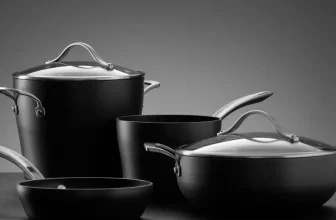
When it comes to selecting the best chef's knife for your kitchen, there are essential aspects to consider that can significantly impact your culinary experience. The right blade material, size, handle design, and weight all contribute to the knife's performance and your comfort while using it. With numerous options available, navigating these choices can be overwhelming. However, understanding how each factor influences your cooking can lead to a more satisfying outcome in the kitchen.
Blade Material Selection
When choosing a chef's knife, prioritize durability and sharpness by selecting the appropriate blade material. The most common blade materials for chef's knives are stainless steel, carbon steel, and high-carbon stainless steel.
Stainless steel blades are resistant to rust and corrosion, making them low-maintenance and ideal for everyday use. However, they can be harder to sharpen and may not hold their edge as well as other materials.
On the other hand, carbon steel blades are known for their exceptional sharpness and edge retention. They're easier to sharpen but require more maintenance to prevent rusting.
High-carbon stainless steel blades combine the best of both worlds, offering the sharpness of carbon steel with the added benefit of stain resistance. Consider your cooking habits and maintenance preferences when selecting the blade material that suits your needs best.
Finding the Right Blade Size
To ensure you have the right chef's knife for your cooking needs, consider the blade size as it plays a significant role in your cutting efficiency and comfort. The blade size of a chef's knife typically ranges from 6 to 14 inches, with the most common sizes being 8 and 10 inches.
For intricate tasks or smaller hands, a 6 to 8-inch blade might be more suitable, offering better control and precision. On the other hand, a larger blade, such as a 10 to 12-inch one, is ideal for handling more substantial ingredients and making quick work of slicing through larger items.
Your cutting style and the types of food you frequently prepare should also influence your decision on blade size. If you often work with large cuts of meat or produce, a longer blade can make the task more manageable. However, if you focus on detailed work or have limited space, a shorter blade may be more practical. Ultimately, selecting the right blade size ensures that your chef's knife complements your cooking style and enhances your overall kitchen experience.
Evaluating Handle Design
Considering the ergonomics and comfort of the handle design is crucial when selecting the best chef's knife for your cooking needs. The handle is where you'll be gripping the knife the most, so it's important that it feels comfortable in your hand and provides a secure grip to prevent accidents.
Look for handles that are ergonomically shaped to fit comfortably in your hand, with no sharp edges or uncomfortable angles. Materials like wood, plastic, or composite materials can affect the feel of the handle, so try out different options to see what works best for you.
A handle that's too thick or too thin can cause discomfort or lead to wrist fatigue, so finding the right balance is key. Additionally, consider the handle's texture – a handle with some grip can prevent slipping when your hands are wet or oily, ensuring a safer cooking experience.
Considering Weight and Balance
Have you ever held a chef's knife that felt perfectly balanced in your hand, making slicing and chopping effortless? The weight and balance of a knife are crucial factors to consider when selecting the best one for your kitchen. A well-balanced knife will feel comfortable to hold, reducing strain on your wrist and arm during prolonged use.
The weight of the knife affects how it feels when you're using it. Some chefs prefer heavier knives for tasks that require more force, like cutting through tough vegetables or meat, while others prefer lighter knives for more delicate work. It's essential to choose a knife weight that feels comfortable and controllable for you.
Balance refers to how the weight is distributed along the knife's length. A balanced knife will have its center of gravity where the handle meets the blade. This balance point allows for better control and precision while cutting. When testing a knife, pay attention to how it feels in your hand. A well-balanced knife will make your cooking experience more enjoyable and efficient.




